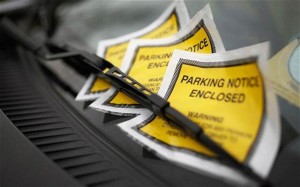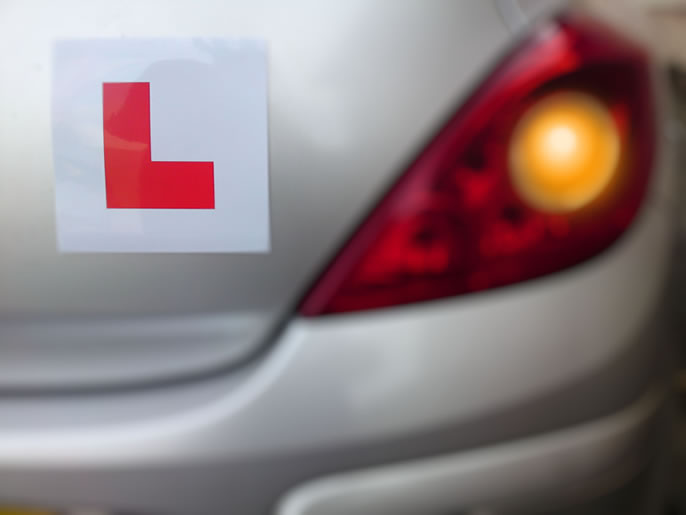Looking outside this morning, the weather can only be described as dull – common for a Glasgow summer!
On my first driiving lesson in Clydebank today i may have to ask my pupil if they feel it necessary to use lights. Their answer should be an emphatic YES.
It is important to be seen clearly, and in insurance claims two constant questions are “weather conditions at time of accident?” and “were lights used?”
if your vwhicle is therefore more visible, there is statistically less chance of someone colliding into your vehicle.
Uncategorized
Lighten Up
Moving Off Safely

Having learned the Controls and Cockpit Drill the next step is to move off safely. This will require co-ordination of car controls and effective observation. A simple and safe way to do this is to learn a routine called P.O.M. or Prepare, Observe, Manoeuvre.
Preparation
This means making sure the parking brake (or handbrake) is firmly on and that the gear lever is in the neutral position- it wobbles freely from side to side.
Turn on the engine now and prepare by doing the following: Clutch down, select first gear, set gas( make the engine sound like it’s purring), find biting point. Biting point is when the engine sound changes. At this point hold the clutch pedal completely steady.
Observe
We need to make sure it is safe and clear to move off and we can only do this by looking around for anybody or anything whose way we could obstruct or endanger.
To do this look for pedestrians or oncoming vehicles in the road ahead. Check for cyclists, motorcyclists or another driver about to move off. Do the same when looking to the rear and using your mirrors. If traffic is approaching too fast or near from behind you just wait until you are clear.
Right Blind Spot Check


The order you check mirrors in could vary according to road and traffic conditions but one common method is: Left door mirror, interior mirror, right door mirror, and finally over your right shoulder into the right blind spot area (the area mirrors don’t let you see into). Sometimes you will need to check left blind spot. Really Good driving instructors will help you with appropriate systems for this but the important thing to remember is you must ensure it is safe to move before moving.
To Signal or Not?
One way to think of this is to ask yourself if it is safe to move. If it is, a signal generally won’t do any harm but may be unnecessary. 
If it is unsafe a signal could send out completely the wrong message to other traffic. In other words, that you are about to do something you have no intention of doing. This could cause other road users to slow, stop or swerve as they think you are going to pull out in front of them. Even as you do move off keep observant, things can change quickly and stopping may become a necessity.
Manoeuvre
To manoeuvre the car let the handbrake off fully and gently begin to let the clutch up while simultaneously increasing the gas. Steady foot control is required as being too quick up with the clutch may result in stalling, as will not enough gas. Too much gas and the car could skid or shoot away. Again, your instructor will guide you initially to practice this control. Once moving steer the car gently into a position about 1 car door length (or a metre) from the kerb.
Congratulations! 
Keep practising and the P.O.M. routine will become completely familiar. One last thing, to avoid disaster you need to know how to stop the vehicle. “Really Good” instructors will of course explain and demonstrate (as required) this procedure beforehand!
London drivers to be allowed to park on double yellow lines?
London drivers to be allowed to park on double yellow lines?
Shop Till You Drop? I Don’t Think So! 
Local Government Secretary Eric Pickles is proposing letting driver’s park on some double yellow lines to help the High Street Economy recover. A proposal of 15 minutes grace has been mooted. I should probably write to Mr Pickles to explain 15 minutes to get in and out of a shop with any article is not going to help too much in my experience. I’ve sat in cars and grown a beard in the time it takes my wife and daughter to enter and leave a shop!
Practical UK Driving Test
Information for the Practical U.K. Driving Test
Every year in the U.K. approximately 1.6 million people undertake the practical driving test. The test consists of driving unaided for around 38 to 45 minutes over a test route. During this time the candidate may be asked to complete an emergency, or “controlled,” stop. They must also answer two questions based on vehicle safety and maintenance- before the driving element – and drive for around ten minutes following direction signs or a route map shown by the examiner.
Before entering the car an eyesight test will be conducted. It consists of reading a registration plate at 20.5 metres distance.
Driving Instructors can accompany candidates on test and examiners will ask the candidates if they want their instructor to sit in the rear of the vehicle during the test.
How the Test is Conducted
Candidate driver errors are graded by the examiner as either dangerous, serious or “driver error.” A serious or dangerous error will result in test failure as will accruing more than fifteen driver errors. The test result is given by the examiner at the end of the test, along with a form explaining any faults committed. The examiner will also offer a verbal debrief.
It is entirely possible that two examiners may go out on a test. However, it should be noted that only one examiner conducts the test. The other will sit in the back of the car and will only observe. This is done periodically to help ensure the uniformity and fairness of tests and bares no effect upon the test result.
The national pass rate is around 43%. Not a great statistic, most would agree. This then, begs the question, how can candidates boost their chances of passing? The following sets out some advice from driving instructors, based on their many years of experience and expertise.
Be Prepared
In most instructors – and examiners – opinions the overriding reason people fail driving tests is not through nerves, bad luck, or unfair examiners, it is because they are unable to drive unassisted without making a serious driving error. With some exceptions, candidates who are able to demonstrate competence in their driving lessons before a test usually pass. Those candidates who have been unable to sustain safe driving practices in their lessons such as driving unassisted in varied road and traffic conditions, usually fail. Nerves mostly come to the fore because candidates lack confidence. Confidence is often lacking because there has been no precedent of competence. In this respect it would be strongly advisable to seek the counsel of a professional driving instructor before booking a practical driving test. Sometimes just a few more lessons make all the difference to passing.
Take a Mock Test
Rather than expend a lot of money, effort and stress, why not ask a driving instructor to conduct mock test? This is a revealing, realistic and accurate practical insight into how a test will be conducted. It also is a strong indicator towards test readiness.
Learner Driving:Signals
Signals – Avoid Misleading Communication 
When conducting a survey amongst drivers recently, one common thread of frustration that became clearly evident was that of “use of signals” – or non -use in many cases. Below are listed some of the most popular reasons why drivers should signal with care, as wrong and misleading signals can lead from mild irritation to complete chaos for those on the receiving end.
Moving Off
When moving off wait for a safe gap before signalling. A signal given when unsafe may cause traffic to stop, thinking you are going to move out in front of them. Sometimes a signal may be unnecessary when moving off if the road is clear of vehicles and pedestrians.
Stopping
Be careful to not signal before an opening that you intend stopping after. Another driver might pull out in front of you as a result. If you think anyone could benefit from a signal, then give it.
At Junctions
If turning right or left signal accordingly. Be very careful not to signal left if there is a road to the left before the one you want. Doing so can lead to drivers in the first road pulling out as they believe you are turning in to their road. Even in filter lanes, nearby pedestrians can benefit from drivers signalling their intention to turn left.
When turning right at traffic lights remember to signal right on approach. Following traffic may well be planning their position at lights based on others signals. There are always problems when drivers put on a late right turn signal, or worse no signal. Other drivers who have spotted parked vehicles or other obstructions beyond the light controlled junction may well queue in behind the vehicle in front, expecting it to go ahead, then suddenly they get stuck behind someone who has just forgotten or not bothered to signal right.
Changing Lanes or Position- Think about Whether a Signal is Needed
Moving to the left may not require a signal. For instance, returning to the left after passing a parked car usually requires no signal as the parked car provides a shield from following traffic. Signally left indiscriminately in this situation may eventually result in another vehicle pulling out from a side road on the left, thinking that the vehicle signalling left is turning left.
Timing a Signal
When moving out to the right if the road is completely clear of all types of traffic, it may make signalling unnecessary. That said it would be unlikely to cause a problem if a signal was given.
Timing signals is important here though, as a signal given as someone is about to pass may cause them to brake sharply, thinking you will pull out in front of them. It’s usually best to signal when they are level, though in a crowded situation a signal will be needed sooner rather than later.